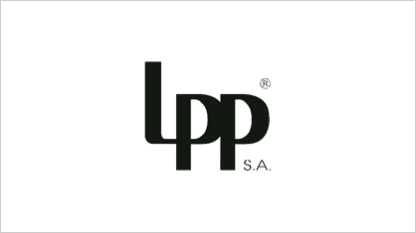LPP
Case Study

The scale of the company's activities, its dynamic growth and ambitious plans for the future required new, effective solutions.
Solution category
LPP S.A. is a Polish company with international reach, involved in designing and distribution of clothing. The company owns such clothing brands as RESERVED, Cropp, House, MOHITO and SiNSAY. Sales are carried out through nearly 1,700 stores in Central and Eastern European countries and, since 2015, also in the Middle East. Since 2001, LPP has been listed on the Warsaw Stock Exchange and in 2014 it joined the WIG20 index.
Challenge
The reason for implementing the solution was the scale of the company's operations, its dynamic growth and ambitious plans for the future. The solutions used by LPP were not able to effectively handle the business needs and caused great problems in the efficiency of management processes. Controlling LPP needed an effective solution for handling the budgeting process and its reporting throughout the Group. The main challenges faced by the new solution included:
- Reducing the workload associated with organising and coordinating processes,
- Improving communication between information providers and process administrators,
- Improving the quality and consistency of processes by maintaining uniform data dictionaries,
- Reducing the risk of human errors (incorrect data, incorrect references).
Solution
The complex project, lasting 12 months, covered all the areas within the competence of the Controlling Department: planning and budgeting, monitoring of the realisation of the cost budget, periodical reporting of financial results and KPIs. The biggest challenge was to integrate the reporting standards used by LPP S.A. and its subsidiaries - in the first stage of the project a uniform controlling chart of accounts was developed for the purposes of budgeting and monitoring results at the level of all units of the organisational structure (starting from the capital group, through individual companies, regions, up to the level of a single store). The presentation of the results of the capital group required the definition of management consolidation rules responsible for, among other things, currency translation, elimination of intra-group settlements or determination and elimination of intra-group margins.
As part of the integration with the existing IT infrastructure, interfaces were created to automatically import data from the finance and accounting system and the sales support system. Management reports are updated daily during the night so that managers have access to the latest data on the efficiency of their units.
The implementation was based on the Infor platform and Microsoft database environment. Such architecture provides a rich set of functionalities in all areas critical for the system's operation, including a simple and intuitive user interface, a number of templates and predefined business rules significantly simplifying the planning process, high performance and scalability, and almost unlimited possibilities for 'ad-hoc' analyses and integration with source systems.
In subsequent years, the system was enhanced with sales forecasting functionalities based on historical data - for this purpose a forecasting module based on the R language was used.
Results
The implemented solution provides many improvements and new opportunities, contributing to increased efficiency. The main results of the implementation include:
- Improved communication process and data quality (single source of truth)
- The solution facilitates administration of the data model using a web interface or a dedicated application
- The solution completely and flexibly supports controlling needs
- It enables fast, effective analyses and automatic reporting and forecasting